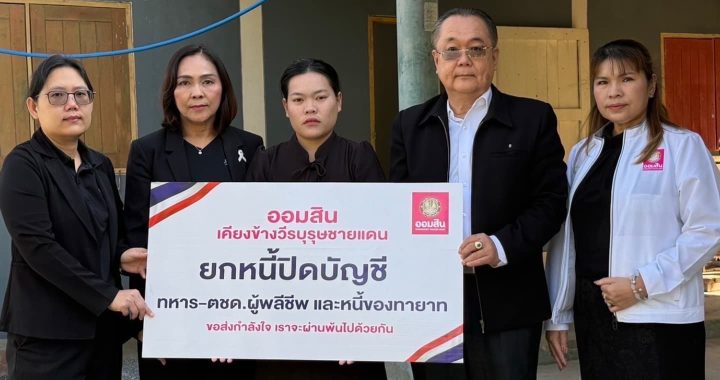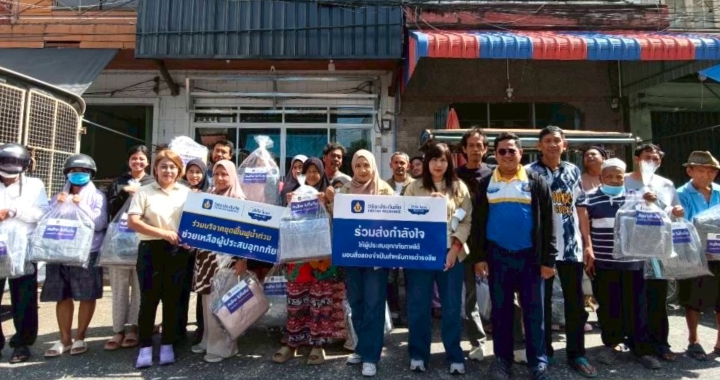KResearch maintains GDP growth projection for 2022 at 2.9%

Amid rising concerns about economic recession in many countries – the US in particular – the Thai economy has only just emerged from the doldrums.

Ms. Nattaporn Triratanasirikul, Deputy Managing Director, KASIKORN Research Center Co., Ltd. (KResearch), holds the view that the US economy is set to plunge into a technical recession once more from the end of 2022 to early 2023. Likewise, the European economy may see a quarter-on-quarter contraction for two successive quarters. Under these circumstances, the Thai economic recovery will thus receive less support from exports. Worse, inflation is expected to remain persistently high worldwide due to protracted international political disputes. Therefore, the Thai economy will be primarily driven by an improved tourism sector during the remainder of 2022 and into 2023. Tourist arrivals for this year are projected at 9.75 million, an increase from the previous projection of 7.2 million. For 2023, the number of international tourists is expected to rise to 13.0-20.0 million, which would remain substantially less than the pre-COVID level of 40 million. Overall, KResearch maintains its GDP projection for 2022 at 2.9 percent. Even though GDP growth for 2023 may accelerate to 3.2-4.2 percent, close attention should be paid to multiple risks, namely runaway inflation, rising interest rate trends and economic slowdowns among Thailand’s trading partners.
Regarding the interest rate outlook, it is expected that the US Federal Reserve (Fed) will press ahead with its policy rate hikes at the two meetings during the remainder of 2022. Further rate increases may also be seen early next year depending on the rate of inflation and the planned extent of each Fed Funds rate hike. Meanwhile, Thailand’s Monetary Policy Committee (MPC) may continue to increase its policy rate at least until the first quarter of 2023, albeit at a relatively meager pace. As for the Baht outlook during the remainder of 2022, it will likely remain weak as long as the US dollar is supported by the Fed’s policy rate hikes.

Ms. Thanyalak Vacharachaisurapol, KResearch Deputy Managing Director, is of the view that signals regarding policy rate hikes given by Thailand’s Monetary Policy Committee and the policy that aims to raise contributions to the Financial Institutions Development Fund (FIDF) to the previous level of 0.46 percent, taking effect at the beginning of 2023, may prompt commercial banks to gradually raise their fixed deposit rates and standard loan rates although liquidity remains at elevated levels. Higher interest rates may not trigger a potential NPL cliff as commercial banks have hastened their debt restructuring and undertaken proactive debt management, but close attention must be paid to issues related to their asset quality and customer assistance measures. KResearch expects that the NPL to total loan ratio in the Thai commercial banking system will be within a range of 2.90-3.10 percent by the end of 2023, against the 2.88 percent recorded at the end of the second quarter of 2022. Loans within the Thai commercial banking system are expected to grow within a range of 4.5-6.0 percent in 2023, versus the 5.0-percent growth projected for 2022, or relatively moderate growth amid increased economic uncertainty.

Regarding the industrial sector for the remainder of this year and in 2023, Ms. Kevalin Wangpichayasuk, KResearch Deputy Managing Director, is of the view that most industries still face multiple challenges, particularly slowdowns in core economies that are among Thailand’s major trade partners. As a result, export-intensive industries may not fully benefit from the Baht’s depreciation. The tourism sector faces a similar dilemma, as major tourist markets have to deal with their weakening currencies, while some countries are at risk of economic recession. Additionally, prices of airline tickets and other travel expenses are higher due to soaring energy prices. These factors have an impact on foreign tourists’ decisions regarding travel and spending. Meanwhile, the Baht’s depreciation by 10-15 percent will raise import costs by around 2.2 percent on average. Consequently, the industrial sector must be prepared to tackle these challenges which could undermine its path towards recovery next year.






































